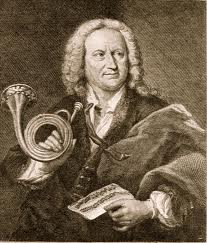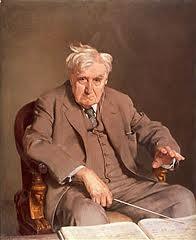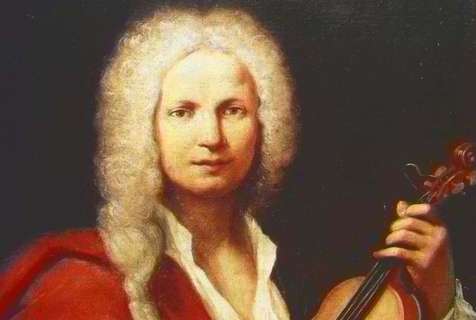Concerto, Romantic, Works
Sir Edward Elgar (1857-1934) was a dominant force in English music at the turn of the 20th century. His magnificent ‘cello concerto was composed in 1919; more recently, it has become identified with the great ‘cellist Jacqueline du Pré, who made it into her signature piece (and is used in the movie Hillary and Jackie.)
This 4-movement work displays an astonishing sweep of emotion and melody, from tragedy and pathos to exuberance. After a declamatory ‘cello opening, the first movement settles into an introspective lilt, punctuated by solo flourishes and dramatic orchestral statements. It is followed without a break by the witty second movement, with its brilliant solo passagework and lightly-textured accompaniment.
A romantic adagio allows the ‘cello to display its singing qualities to the fullest. The dramatic last movement is at times almost operatic, with the ‘cello and orchestra playing off each other’s themes; towards the end, themes from the adagio and opening movements make an encore appearance before a dash to the dramatic finish.
20th Century, Concerto, Works
No notes available.

Baroque, Concerto, Works
Many of Bach’s cantatas and oratorios include instrumental sections, such as sinfonias or overtures, which are musical masterpieces in their own right. Bach freely interchanged his compositions as he saw fit, borrowing from his instrumental works as needed to fill out his vocal works, and vice versa.
This Concerto in D major is based on the first three movements of the Easter Oratorio, which according to musicological research may well have been performed separately as a three-movement instrumental concerto.
The first two movements (Allegro and Adagio) are taken verbatim from the Oratorio. The third movement is based on the Oratorio’s following choral number, with the original orchestral opening and accompaniment, and vocal lines arranged for instruments. The first and third movements of this concerto are scored for a large orchestra of trumpets, timpani, oboes, bassoon, strings and continuo. Majestic openings contrast with more quiet, introspective sections, including a section featuring solo violin in the first movement and a section with a small violin-oboe-continuo chamber ensemble in the third movement.
The second-movement Adagio is a mellifluous oboe solo over string accompaniment, serving as an introspective contrast to the exuberant outer movements.
Concerto, Romantic, Works
This concerto is certainly one of the most familiar, and best-loved, works in the entire violin repertoire. It was composed in 1844 expressly for the violin virtuoso Ferdinand David and performed in Leipzig the following year.
Its three movements are essentially meant to be played without pause (although there is a slight break between the second and third movements). After a one-measure introduction, the famous opening theme is introduced by the solo violin, and gradually picked up by the entire orchestra. A lyrical theme is introduced by the winds midway through the movement; the cadenza makes an early appearance, leading to the recapitulation of the opening theme.
The second movement is essentially a “song without words,” simple and hauntingly beautiful. After a restless introduction, the solo violin introduces the last movement’s theme – an elf-like motif, evocative of Mendelssohn’s incidental music to A Midsummer Night’s Dream. A second robust orchestral motif makes its appearance; Mendelssohn thoroughly mixes the two themes in the contrapuntal section that follows. A triumphant coda brings the concerto to a close.
Concerto, Romantic, Works
Vivaldi, himself a violinist, wrote over 500 concertos, and interestingly enough, besides the 230 for violin, wrote more concertos for the bassoon than for any other instrument. Even though, like Bach, Vivaldi was forgotten for decades, the resurgence in scholarship of baroque music in the late 19th century brought him back into recognition.
In his own time, Vivaldi was actually quite influential, having established some standard-practice techniques of baroque composition and serving as a model for the young Bach. Even though he borrowed his own material liberally, as was the practice at the time, he was nonetheless very inventive, especially in string writing. He devised different expressive techniques in string articulation and bowing.
One can hear this transparently in the bassoon concerto we are performing, a graceful string texture backing up the remarkable solo bassoon fireworks and melodic display.

20th Century, Concerto, Works
Written in 1954, this short 3-movement work was Vaughan Williams’ last concerto.
It is a compact work, with 2 modernistic outside movements surrounding a slow movement. It begins with a vigorous opening built around rising and falling scale-like passages. This is followed by a second theme (a little reminiscent of Hindemith in style), and a third, folk song-like theme.
The second movement harks back to Vaughan Williams’ earlier melodious and dreamy style. Orchestra and soloist both take part, weaving in and out of the musical fabric; the tuba’s sonorous capabilities are on full display in the scale-based theme followed by baroque-like ornamentation.
The concluding Finale is a rollicking “German rondo” (“Rondo alla Tedesca”), with a robust main theme first played by the tuba and echoed by the orchestra; the second theme is harmonically more adventurous, with a plaintive, almost urgent feel to it. After successive, ever more frenetic renditions of the 2 themes, the concerto ends in a furious dash.
The first and third movements both contain substantial solo cadenzas displaying the tuba’s range and versatility.

Baroque, Concerto, Works
The collection of 12 concertos known as “L’Estro Armonico” (Harmonic Inspiration) was first published in 1711 in Amsterdam. It includes some of Vivaldi’s most famous concerti, known to beginning violin students and professionals alike.
The collection itself is divided into 4 groups of three concertos apiece; each group consists of a solo, double and quadruple concerto. Concerto No. 10 is one of the quadruple concertos. The soloists are many – 4 solo violins, solo violoncello, and a number of solo viola parts (plus orchestra and continuo).
The concerto is basically a three-movement (fast-slow-fast) work, although the slow movement is itself divided into smaller segments. Vivaldi gives each of the soloists his/her own lines and motifs, with plenty of inventive interplay.
Classical, Concerto, Works
The fifth concerto for violin, K. 219, is one of a series of great works for Mozart’s “other” instrument. We associate Mozart, and rightly so, with the keyboard. But Mozart’s skills on the violin were quite accomplished. Scholars believe Mozart performed his own violin concertos.
This concerto was written in 1775, while Mozart was in his less-than-happy tenure in his home town of Salzburg. This period of Mozart’s output saw early successes in opera and a massive output of concertos — all five recognized violin concertos were written in 1775, in addition to the first of the great piano concertos.
The concerto begins with a fast orchestral introduction. The violin solo, however, enters in a more Haydn-esque, adagio tempo. What is unusual is that not only is the tempo momentarily changed, as if the violin solo entered suspended in time, but instead of the grand, pompous slow introductions of Haydn, this is almost like inserting a slow concerto movement right into the beginning of the piece. Everything picks up again quickly, and the violin solo plays a new theme, overlaid exactly on the material of the first orchestral introduction. This ability of Mozart’s reminds the listener of Bach, where the composer can have a complete musical idea or create an entire pre-existing movement, then add still another layer of music to this music, the final product working just as well as the original. (Mozart dramatically demonstrated this concept in his own arrangement of Handel’s Messiah.)
The slow movement of this concerto contains impossibly genial, nearly polyphonic textures and harmonic treatments, all within a framework of seemingly effortless, sublime “galant” grace.
The third movement carries the idea of sections with contrasting moods and tempi further. The easy triple meter gives way to an “alla turca” section, which some believe to be actually more Hungarian-inspired than Turkish.

Concerto, Romantic, Works
This concerto is truly a work of superlatives.
It was the last concerto Beethoven composed, and is seen by some as the end of his “heroic” period. The title “Emperor,” although in common use now, is not Beethoven’s; it became attached to the concerto after Beethoven’s death, in 1827, probably due to the nobility and expansiveness of its themes.
Beethoven composed this work in 1809 during the siege and bombardment of Vienna by the French under Napoleon. Due to his growing deafness, it was the first of his piano concertos where the premiere was played by a pianist other than Beethoven himself (by Friedrich Schneider in Leipzig in 1811, and by his pupil Carl Czerny at the Vienna premiere in 1812). It was also the first concerto in which a composer integrated his cadenzas into the score itself; indeed, it is notable that the piece actually starts with a piano cadenza!
After the opening cadenza, the orchestra states the familiar first martial theme, which includes a turn, descending arpeggio quarter notes, and a dotted eighth-sixteenth-half note motif, all of which make their appearance as subthemes later in the first movement. The second theme also makes its appearance in the opening orchestral tutti, in E-flat minor – a soft step-wise slow “march” immediately reprised in E-flat major as a beautiful melody played by two horns. This basic thematic material is used by Beethoven throughout the first movement, interspersed by richly ornamented piano passages and cadenzas. The key relationships are also notable. Besides the usual familiar keys (E-flat, B-flat, A-flat), Beethoven repeatedly moves into more distant keys, particularly C-flat major/B minor (with a “third” relationship to the concerto’s overall key of E-flat). Also notable are a tendency for themes to move step-wise by a half-tone into different keys.
The following adagio is in B Major (again that “third” relationship). Its opening theme is actually based upon a tune which Beethoven originally intended for a military band (!) and then magically transposed into an ethereal “pilgrim’s song.” After the opening, the theme is repeated twice, once by the piano alone, then by a flute-clarinet-bassoon choir against the piano’s accompaniment.
At the end of the adagio, a step-wise downward movement from the bassoons to the horns brings the tonality back from B major to B-flat (the fifth of E-flat). After a tentative prelude, the pianist launches full throttle into the robust last movement, a classic joyous rondo with hunting theme overtones. The rondo theme is repeated four times, and interspersed with variations by soloist and orchestra. In the coda the piano plays part of the rondo theme accompanied by the timpani. A last dash by the piano and orchestra leads to the concerto’s grand conclusion.
Classical, Concerto, Works
This is one of Haydn’s best-known concerti, and one of the most famous works for trumpet. Haydn composed it in 1796, and made full use of the solo ability of the chromatic trumpet, which had just come into its own.
The concerto is scored for large orchestra and displays the full panoply of Haydn’s mature orchestral style. An opening stately allegro gives the trumpet full reign to display melodic and technical prowess. The short slow movement features a beautiful opening melody in A-flat played by the strings and repeated by the trumpet, and displays an astonishing variety of harmonic invention.
The witty last movement, in rondo form with running passages by soloist and orchestra, closes out this work in dramatic style.



